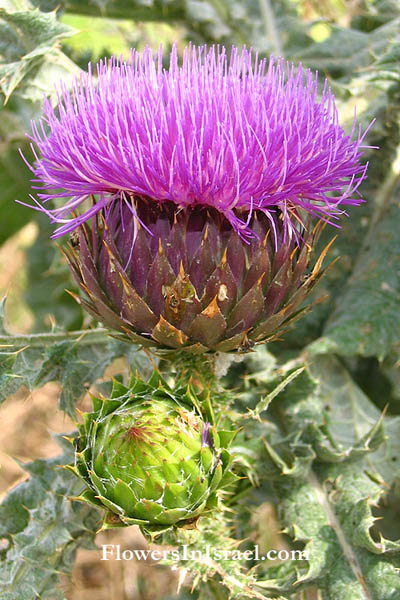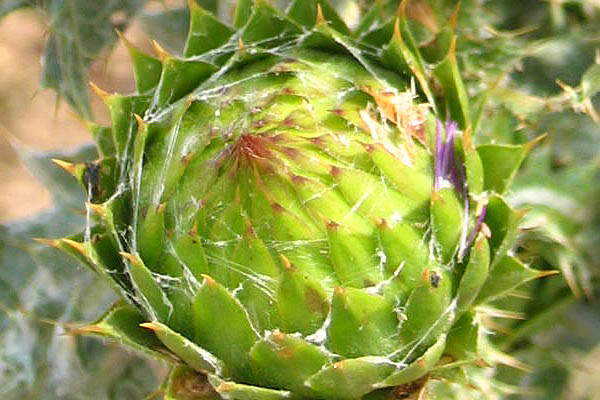Hebrew: קנרס סורי, Arabic: حَرْشَف سوري; خُرْفَيْش الحَمير
| Scientific name: | Cynara syriaca Boiss. | |
| Common name: | Wild Artichoke, Syrian Wild Artichoke | |
| Hebrew name: | קנרס סורי | |
| Arabic name: | حَرْشَف سوري; خُرْفَيْش الحَمير | |
| Plant Family: | Compositae / Asteraceae, מורכבים |

|
| Life form: | Hemicryptophyte | |
| Spinescence: | Leaves, bracts | |
| Stems: | 50–250 cm. herbage ± arachnoid-tomentose. Stems ± erect, simple or branched, (leafy), stout | |
| Leaves: | Alternate, rosette, dissected, pinnate, dentate or serrate, spinescent | |
| Flowers: | Violet, spinescent bracts | |
| Fruits / pods: | Cypselae | |
| Flowering Period: | June, July, August | |
| Habitat: | Batha, Phrygana | |
| Distribution: | The Mediterranean Woodlands and Shrublands | |
| Chorotype: | Med - Irano-Turanian | |
| Summer shedding: | Ephemeral |

Derivation of the botanical name: Cynara, kynara or kinara, kynaros akantha, the Greek for a spiny plant; Latin cinara, for a kind of artichoke and for a native of the island of Cinara, in the Aegean Sea, now Zinara. syriaca, Syrian. The Hebrew name: קנרס, kiners mentioned in the Mishnah Kilayim 5:8: "Artichokes (Kiners) are kilayim in a vineyard".
|